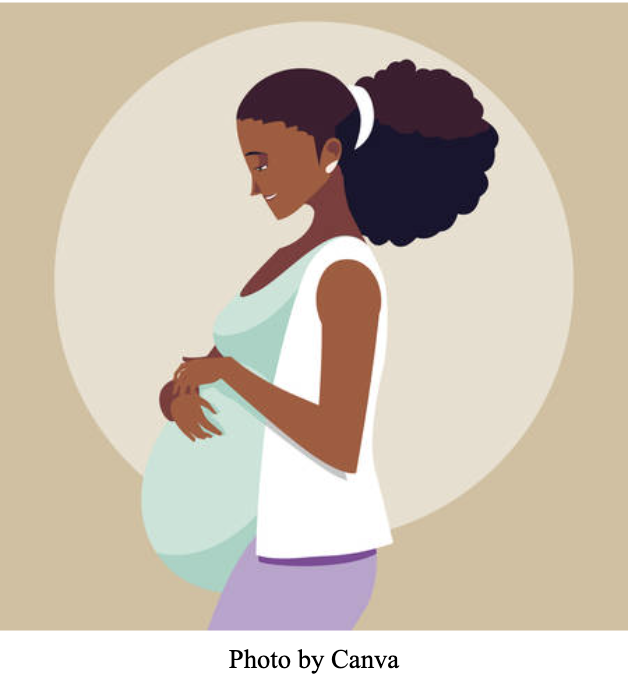Race and Southern Food Deserts
Welcome to the Pregnancy Challenges: Nutrition, Race, and Food Deserts in the American South series!
There is a specific population in the United States at higher risk of pregnancy complications: African Americans living in food deserts in the South. Athena’s Bump is dedicated to preventing and reducing health risks during pregnancy, so we feel the need to address the pregnant people that are predisposed to health risks due to the fact that they live in a food desert. Upon a quick Google search, I discovered that the neighborhood I grew up in in West Alexandria, Virginia is actually a food desert. Knowing that the West end is also much more diverse than the East end, I decided to investigate further. My findings are what inspired the Pregnancy Challenges: Nutrition, Race, and Food Deserts in the American South series, a three-part intersectional investigation of race, nutrition, and maternal health.
In this series, Athena’s Bump dives into the culture of the South - its food, its people, and its challenges. From dissecting the history behind food deserts to redefining Southern food, we hope to spark a conversation about the future of pregnant people living in food deserts in the South.
Race and Southern Food Deserts
What is a food desert?
A harsh reality to start off this series: 18.8 million Americans live in food deserts.6 That’s an astounding number to read. But if you don’t struggle with finding food on a daily basis, the idea of what exactly constitutes a food desert may be a bit unclear to you. To begin our discussions, let’s review the United States Department of Agriculture’s official definition of a food desert:
A tract, [an area of indefinite extent], in which 100 households are located more than one-half mile from the nearest supermarket and have no vehicle access; or at least 500 people, or 33 percent of the population, live more than 20 miles from the nearest supermarket, regardless of vehicle availability.6
Food deserts exist in one of two ways, as:
A rural area with supermarkets over 20 miles away, or
2. An urban area with supermarkets over 1/2 of a mile away where inhabitants do not have access to their own car.
While the word “desert” evokes images of wide open spaces with no vegetation or humans, the reality of food deserts in America is vastly different. Food deserts in rural areas – the parts of the United States most reminiscent of those uninhabitable “wide open spaces” – often exist on quite fertile land. But the truth is that the majority of food deserts do not exist in “wide open spaces” at all. In the United States, urban areas account for 4,175 of the 6,529 food deserts recognized by the USDA.6
Where are urban food deserts?
My search led me to the USDA’s Food Access Research Atlas, an interactive map highlighting every food desert in the nation. I used this data to plot what percentage of low-income populations in large metropolitan areas live in food deserts.
A graph depicting the percentage of the low-income population in large metropolitan cities that live in food deserts. Highlighted in yellow are cities found in the South.
As a resident of Virginia and an intern for a company based in Virginia, I was alarmed to find that my state made this list twice. Even more, I was startled by the fact that Southern cities dominated the data. Of the 17 large metropolitan cities with the highest percentages of inhabitants living in food deserts, 13 exist in the South.
Map of Southern food deserts as recorded in the USDA’s Food Access Research Atlas.
Why urban areas? Why in the South?
In order to answer these questions, we must first understand the history of food deserts. In the 1950s and 1960s, the White Flight phenomenon was felt across the nation: white people fled their diversifying cities for the suburbs to live in more homogeneity amongst themselves. When they left, they brought the large supermarket companies with them. The companies, upon selling vacant storefronts in the cities, put in place covenants that prevented future shop owners from establishing new supermarkets. Their goal was to prevent other companies from providing food for and profiting off of the racially diverse populations that still remained in the cities. The result was extensive, with regions of cities that lacked proper supermarkets to buy fresh produce and nutritious foods. This left minority populations unable to provide proper nutrition to their families, with many relying on local convenience stores to buy groceries.4 According to the National Institutes of Health, convenience store prices are higher than grocery store prices since they do not have the means to purchase goods at wholesale prices.2 As laid out in the California Law Review, this was a “one-two punch of hemming non white families into certain neighborhoods and then preventing supermarkets from existing in these same neighborhoods, [devastating] the physical health of racial minorities and the economic health of their communities”.4
Who is most affected by food deserts?
Based on this history, it is no shock that minority Americans are impacted more by food deserts than white Americans. According to the USDA, areas labeled as food deserts are more racially diverse than other areas. The percentage of black people in a population living in urban food deserts is more than double the percentage of black people in a population living in urban areas not affected by food deserts. In rural food deserts, the population is 65% more diverse than rural areas not affected by food deserts.3 According to the NIH, there is also an association between food deserts and socioeconomic status. One study found that as neighborhood socioeconomic status decreased, supermarket availability decreased and convenience store availability increased.1 This means that poorer neighborhoods have more convenience store access and less supermarket access, reducing their ability to buy nutritious foods. Be that as it may, the association between food deserts and race is more prominent than socioeconomic status: for the communities that exist at the same poverty level, white communities have access to the most grocery stores, black communities to the fewest, and integrated communities are right in the middle.1
What does living in a food desert mean for pregnancy?
Athena’s Bump was built on the idea that healthy nutrition can promote a healthy pregnancy and a thriving baby. It is no surprise that women in food deserts have higher risk pregnancies since their access to nutritious foods to sustain themselves and a growing baby are limited. In one study of 3,500 pregnancies, the American Journal of Obstetrics and Gynecology found that women living in food deserts were more likely to be African American, and also more likely to be living in urban neighborhoods with higher poverty rates and lower median household incomes.7 Of all the pregnancies, those living in food deserts were 27.3% more likely to have spontaneous preterm deliveries. Another study from NIH found that the odds of having at least one morbid condition during pregnancy, including preeclampsia, gestational hypertension, gestational diabetes, or prelabor rupture of membranes, were higher for patients living in food deserts at the time of their pregnancy and delivery than for other patients.5 In looking at the bigger picture, we see that low-income, African American women in the South are the most likely to be living in food deserts, which makes the likelihood of health risks during their pregnancies even greater.
When it comes to food deserts, African American women are the victims of an unjust history. In next week’s article, we’ll dive into the history of Southern food and the role race has played in its evolution.
References:
Bower, Kelly M., et al. “The Intersection of Neighborhood Racial Segregation, Poverty, and Urbanicity and Its Impact on Food Store Availability in the United States.” Preventive Medicine, vol. 58, Jan. 2014, pp. 33–39, www.ncbi.nlm.nih.gov/pmc/articles/PMC3970577/, https://doi.org/10.1016/j.ypmed.2013.10.010.
Caspi, Caitlin, et al. “Pricing of Staple Foods at Supermarkets versus Small Food Stores.” International Journal of Environmental Research and Public Health, vol. 14, no. 8, 15 Aug. 2017, p. 915, https://doi.org/10.3390/ijerph14080915.
Dutko, Paula, et al. Characteristics and Influential Factors of Food Deserts. United States Department of Agriculture, Aug. 2012.
Leslie, Christopher. “Food Deserts, Racism, and Antitrust Law.” California Law Review, Dec. 2022, www.californialawreview.org/print/food-deserts-racism-and-antitrust-law. Accessed 26 July 2023.
Tipton, Matthew J., et al. “Association of Living in a Food Desert with Pregnancy Morbidity.” Obstetrics & Gynecology, vol. 136, no. 1, July 2020, pp. 140–145, https://doi.org/10.1097/aog.0000000000003868.
USDA. “USDA ERS - Go to the Atlas.” Usda.gov, 2012, www.ers.usda.gov/data-products/food-access-research-atlas/go-to-the-atlas/.
Willingham, Laura, et al. “Association between Food Deserts and Pregnancy Outcomes.” American Journal of Obstetrics and Gynecology, Jan. 2020, www.ajog.org/article/S0002-9378(19)31788-0/fulltext.





